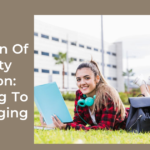Cultural diplomacy : plays a significant role in fostering international relationships through the arts and music. This article explores how these creative expressions serve as tools for communication, understanding, and collaboration among nations.
Introduction to Cultural Diplomacy
Cultural diplomacy refers to the use of cultural exchanges—such as art, music, and literature—to enhance mutual understanding and cooperation between countries. It operates as a form of soft power, where nations leverage their cultural assets to influence others positively. The arts, particularly music, have a unique ability to transcend linguistic and political barriers, making them effective mediums for diplomacy.
The Role of Music in Cultural Diplomacy
1. Facilitating Communication
Music acts as a universal language that can convey emotions and ideas without the need for translation. This quality allows musicians to communicate messages of peace, solidarity, and resistance across cultural divides. For instance, during the Cold War, American jazz musicians toured globally as “jazz ambassadors,” promoting U.S. values of freedom and personal expression through their performances2.
2. Building Bridges Between Cultures
Cultural exchanges involving music create opportunities for dialogue between diverse communities. Collaborative projects, such as international music festivals or joint performances, promote intercultural understanding and respect. These interactions help dismantle stereotypes and foster friendships among people from different backgrounds.
3. Promoting National Identity
Music can also serve as a means for countries to express their cultural heritage and identity on the global stage. National anthems, folk songs, and traditional music not only showcase a nation’s artistic legacy but also instill pride among citizens. For example, South African musician Miriam Makeba used her platform to advocate against apartheid while celebrating her cultural roots2.
4. Supporting Social Movements
Throughout history, music has been intertwined with social movements, often acting as a catalyst for change. Protest songs can resonate deeply within societies facing oppression or injustice, mobilizing communities toward collective action. These musical expressions can influence public opinion and even sway political decisions.
Case Studies in Cultural Diplomacy
1. The Cold War Era
During the Cold War, cultural diplomacy through music became particularly prominent. The U.S. State Department sponsored jazz concerts worldwide to promote American culture while countering Soviet influence. This initiative not only showcased American talent but also highlighted the power of music in bridging ideological divides.
2. The Eurovision Song Contest

The Eurovision Song Contest serves as an example of how music can foster unity among European nations. This annual event encourages countries to showcase their musical talents while promoting a sense of shared identity across the continent. It has become a platform for dialogue and collaboration among diverse cultures.
3. Modern Collaborations
In contemporary times, initiatives like the West-Eastern Divan Orchestra bring together musicians from Israel and Arab countries to promote peace through music. By providing a neutral space for collaboration, such projects illustrate how cultural diplomacy can address conflicts and build understanding.
Also Read : What Is the Future of NATO In Global Politics?
Conclusion
The arts and music are vital components of cultural diplomacy, offering pathways for dialogue, understanding, and collaboration among nations. By transcending barriers of language and politics, they foster connections that can lead to lasting relationships based on mutual respect and shared values. As globalization continues to shape our world, the importance of integrating arts into diplomatic efforts will only grow.In summary, cultural diplomacy through music not only enhances international relations but also contributes to social cohesion within societies by promoting shared experiences and understanding across cultures.
FAQs
1. What is cultural diplomacy?
Cultural diplomacy refers to the use of cultural exchanges, including arts and music, to foster mutual understanding and cooperation between countries. It aims to build relationships through shared cultural experiences.
2. How does music facilitate communication in cultural diplomacy?
Music serves as a universal language that transcends linguistic barriers, allowing people from different cultures to connect emotionally and communicate ideas without the need for words.
3. Can music promote peace and understanding between conflicting nations?
Yes, music has the potential to bridge divides and promote dialogue between conflicting nations by creating a shared space for interaction and collaboration, as seen in initiatives like the West-Eastern Divan Orchestra.
4. What are some historical examples of music used in cultural diplomacy?
Notable examples include the U.S. jazz diplomacy during the Cold War, where American jazz musicians were sent abroad to promote U.S. values, and the Eurovision Song Contest, which has fostered unity among European nations since its inception.
5. How do arts and music contribute to national identity in cultural diplomacy?
Arts and music allow nations to express their unique cultural heritage on the global stage, fostering pride among citizens while promoting their cultural narratives internationally.





